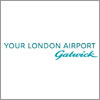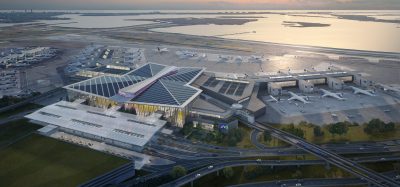NATS and Gatwick launch the first London Airspace Consultation
- Like
- Digg
- Del
- Tumblr
- VKontakte
- Buffer
- Love This
- Odnoklassniki
- Meneame
- Blogger
- Amazon
- Yahoo Mail
- Gmail
- AOL
- Newsvine
- HackerNews
- Evernote
- MySpace
- Mail.ru
- Viadeo
- Line
- Comments
- Yummly
- SMS
- Viber
- Telegram
- Subscribe
- Skype
- Facebook Messenger
- Kakao
- LiveJournal
- Yammer
- Edgar
- Fintel
- Mix
- Instapaper
- Copy Link
Posted: 15 October 2013 | Gatwick Airport | No comments yet
This consultation is the first stage in a wider programme of proposed changes to deliver the UK’s Future Airspace Strategy…


- 14-week consultation seeks local feedback on Gatwick’s airspace ‘motorway network’
- Programme will modernise airspace to make the most of new technology
- Changes will support Gatwick’s continued focus on reducing noise, CO2 and air quality impacts
NATS, the UK’s leading provider of air traffic services, and London Gatwick Airport started a joint consultation today, 15 October, on proposed airspace changes over southern England.
The London Airspace Consultation (LAC) will run from 15 October 2013 to 21 January 2014 and will be available online for stakeholders and the public to view and leave feedback that will help with the modernisation of the UK’s airspace structure.
This consultation is the first stage in a wider programme of proposed changes to deliver the UK’s Future Airspace Strategy (FAS), developed by the Civil Aviation Authority (CAA) with the support of the aviation industry. It will deliver significant benefits, including fuel savings for airlines, which will also mean fewer CO2 emissions, and less noise overall for people living below.
Aircraft today use very accurate navigation technology and new European legislation requires all member States, including the UK, to revise airspace and maximise the use of these new technologies. Change is therefore inevitable and the focus of this consultation is on how best to enable that change.
At this stage of the programme, proposed changes focus on the airspace supporting London Gatwick Airport from ground level up, and to the airspace supporting London City Airport above 4,000ft. Later stages will address proposals for airspace supporting other parts of the London airports network, to be complete by 2020.
After listening to feedback from previous consultations, this consultation is on swathes of airspace – not on proposed routes. The final route positions will only be determined after consideration of the feedback from the consultation.
There is a possibility of including ‘respite routes’ – additional routes that could provide some predictable respite from noise for people living below flight paths. The new design concept being implemented for this programme, making the most of new navigation capability, will also significantly reduce the use of conventional holds (or stacks), and put new route structures over the sea where possible.
The net effect of these proposals will be less noise – aircraft will climb higher, more quickly on departure and stay higher for longer on arrival. Flight paths will eventually change – and this may mean some areas will be overflown more than today, others less, and some will not notice any significant change.
Juliet Kennedy, NATS’ Operations Director, Swanwick, said: “The airspace change programme is essential if we are to contribute to and ensure the success of the UK’s Future Airspace Strategy (FAS). The airspace above London is the most complex in the world, and as traffic levels increase change is necessary to ensure safety and service levels.”
Tom Denton, Head of Corporate Responsibility at London Gatwick, said: “Gatwick is committed to leading the way in terms of airspace innovation and operation, which is why we were so keen to be the first major UK airport to work with NATS to fully review and consult on our airspace.
“Gatwick’s noise impacts are already well mitigated and significantly lower than at other major airports. However, the airport continues to look at ways to further reduce the number of people affected by aircraft noise in line with Government policy.
“This project gives us an opportunity to further reduce the number of people affected by noise, as well as focus on further reducing Co2 emissions and air quality impacts. Therefore this is an important time for local people and those who live within our flight paths, who now have a once in a lifetime opportunity to give their feedback and influence the future of our airspace.”
The consultation is available online at www.londonairspaceconsultation.co.uk. The postcode search facility and clickable maps with consultation areas clearly marked makes it easy to see which proposed changes have the most relevance to a specific location. Feedback can be given directly on the website.

















